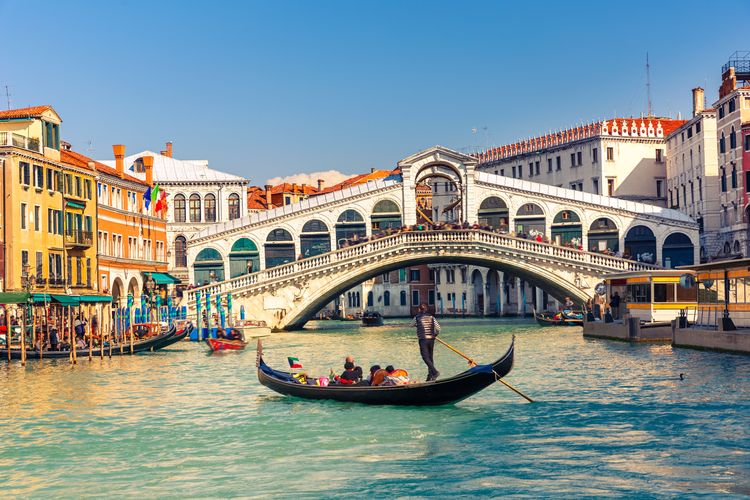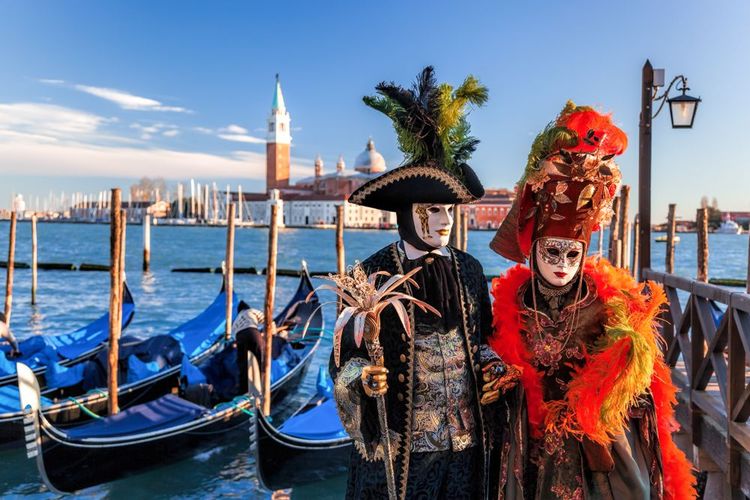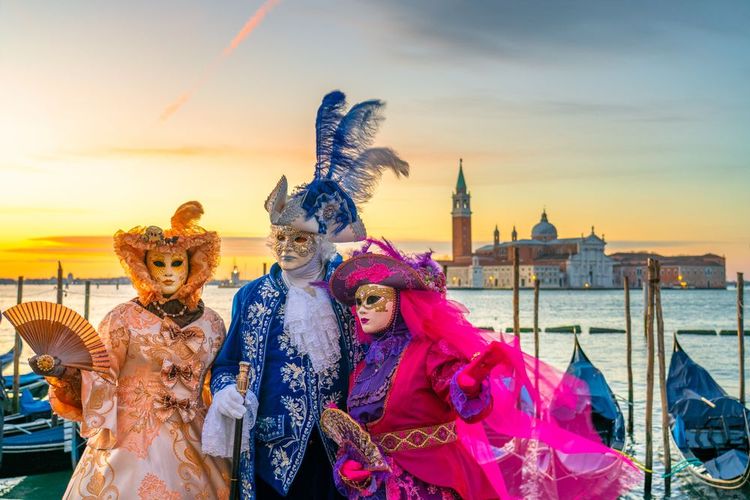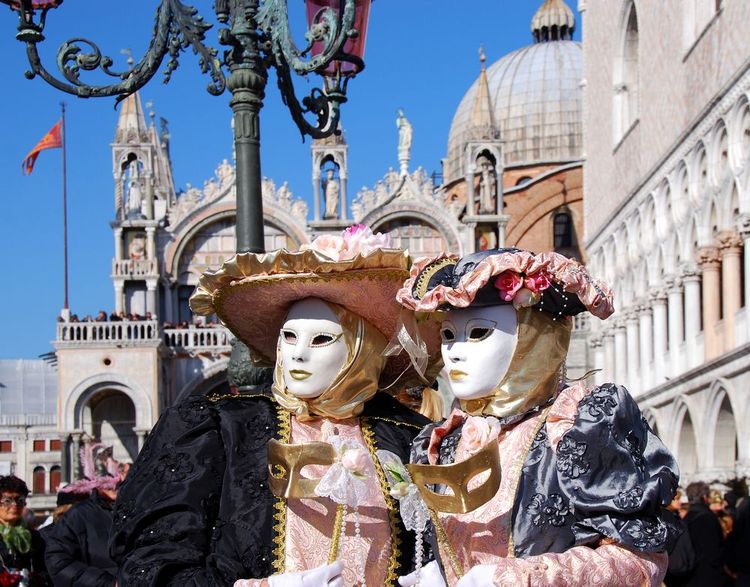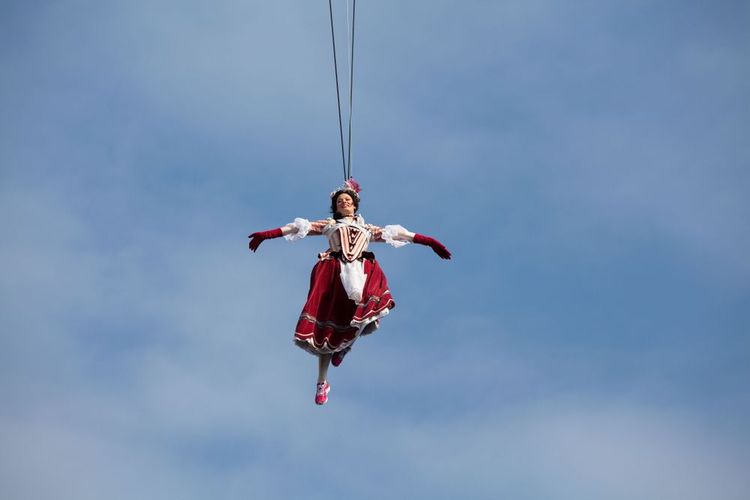The tradition of the Venetian Carnival goes back a long way in Venetian history... its origins date back to the Middle Ages, while the festivities reached their golden age as early as the 15th century, accompanying the insolent success of the Republic of Venice at the height of its power.
Carnival in Venice was an opportunity for everyone to mingle with the rest of the city's population, for a short while erasing social differences. It was accompanied by games, performances and, of course, masks and disguises in the run-up to Mardi Gras.
Today, the tradition of Venice Carnival lives on: In February, for a fortnight, the squares, campi and cafés are filled with astonishing masked characters in the traditional costumes for which the event is famous the world over. A very special way to discover Venice...
